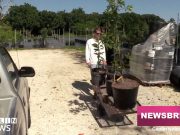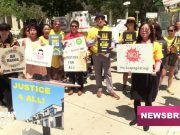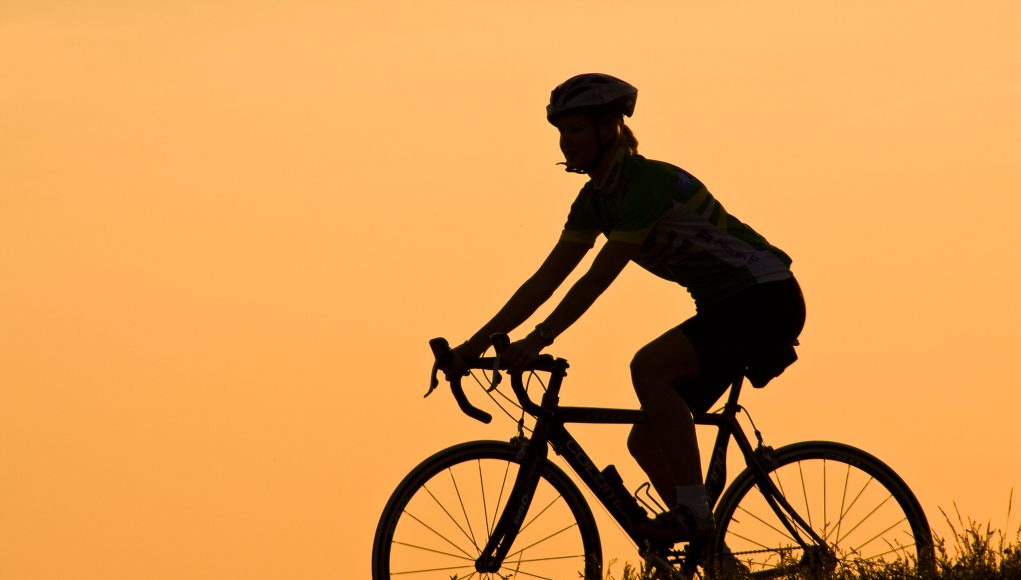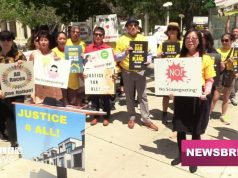With a cool breeze from the Atlantic, canopies of trees lining the road, and a lack of hills anywhere in sight, Miami-Dade should be a cyclist’s paradise. Instead, bumper-to-bumper traffic is the norm for getting around town.
Miami-Dade is one of the main focal points in the United States when it comes to climate change, as local governments champion renewable energy initiatives and environmentally friendly legislation. The county has clean air because of its flat land and winds, but this advantage is being taken for granted.
Miami-Dade County produces 36.5 million metric tons of carbon dioxide annually, and 55% of those emissions come from transportation. In its 2022 “State of the Air” report, the American Lung Association gave Miami a “C” grade for ozone pollution—a barely passing grade. Bicycling is a seemingly obvious solution to try to decrease emissions, but most Miami residents believe that a car is a necessity for getting around the city.
So, if South Florida’s topography is ideal for cycling, what is stopping locals from hopping on a bike?
With the blaring noise of the Dadeland Station Metrorail behind him, cycling activist Hank Sanchez-Resnik spoke about the fear that is driving people to stay in their cars. “We have a very high rate of bicycle-pedestrian injuries and fatalities,” he says. “Everybody I talk to says they’re scared to get on a bike.” He cited lack of safety as the greatest reason why South Floridians are hesitant to make the switch from cars to bikes.
In 2021, there were 795 bicyclist crashes and 17 fatalities in Miami-Dade County, and Florida is reportedly the deadliest state for cyclists in the country with a fatality rate of 6.18 deaths per 100,000 people, 163 percent above the national average.
Since he moved to Miami in 2005, Sanchez-Resnik has been working tirelessly to make the city more safe and accessible for people riding bicycles. “Even before I moved from Coconut Grove to Key Biscayne, I started getting very active in advocacy for the Commodore Trail, which goes right through Coconut Grove.”
Sanchez-Resnik helped start Friends of the Commodore Trail, a nonprofit organization established in 2018 that seeks to improve the historic and scenic bike route, one of few urban bike trails in the area. Friends of the Commodore Trail is one of several grassroots organizations advocating for cyclist and pedestrian safety, but Sanchez-Resnik believes that any real change “has to come from the top.”
He noted, “Unfortunately, there aren’t very many elected officials who even think about bicycling and there aren’t many real estate developers who take bicycling seriously.” Especially in suburban areas of Miami-Dade like Kendall, Miami Lakes, and others, cycling and public transportation are not seen as feasible. “Miamians are brainwashed into thinking that when you leave your house to go somewhere, you get in a car…There are really no options.”
Despite the economic and environmental advantages of biking as a form of transportation, Miami-Dade bike culture mostly consists of sport and leisure.
“If you see people on bikes, they tend to be really young people, and often they’re biking for competitive leisure, not transportation,” Sanchez-Resnik said. “A lot of people put their very expensive bikes on their very expensive cars and then drive to a place where the group rides start.”
Chic Bike Crew, a Hialeah-based cycling group headed by Nahara Maral, perfectly encompasses the cycling lifestyle that exists in South Florida.
They bike up to seventy miles throughout Hialeah and Doral every week, but, despite their near-professional cycling abilities, they still use cars as their primary form of transportation. Unsurprisingly, they also emphasized a fear of motorists when riding on the streets.
Every Saturday morning, they ride from Hialeah Gardens Bike Shop down to Doral, where they stop at the corner of NW 129th avenue and NW 17th street. Here, the more advanced riders will ride laps and sprint around a block of warehouses, while the others act as crossing guards, notifying cars of their presence.
In Hialeah, the city where most of the group lives, bike lanes are few and far between, making it nearly impossible for someone to commute to work safely without the risk of an accident. In Miami-Dade, a county with 5,500 miles of road, there are only 208 miles of bike lanes.
Even more scarce are protected bike lanes, which are crucial to making cyclists feel safe enough to make the switch from driving to biking. Only 5 miles of protected bike lanes, with physical barriers between motorists and cyclists, exist throughout the county. Protected bike lanes have proven to reduce bike-related injuries at intersections by about 75 percent, compared to intersections without cycling infrastructure.
Another obstacle hindering Miami-Dade residents from using bicycles as a form of transportation is the lack of accessible public transportation throughout the county. The Metrorail is unfeasible for people living in suburbs, and biking to work or school could take several hours that the average worker cannot spare.
Christine Rupp, Executive Director of the Dade Heritage Trust, bikes to work every day. She is lucky enough to live only four miles from the nearest Metrorail station and have another station only half a mile from her workplace. But, for most people that live several miles from a safe bike trail and even farther from a train station, it is not sustainable.
Not only is the danger of cycling on streets unsustainable, but the threat of climate change is also making South Florida hotter and wetter every year. So, there is only a small window of time before the heat and rain makes it impossible to comfortably cycle. Miami-Dade’s Extreme Heat Action Plan cites greenhouse gas emissions as the root of this burden, but as global warming intensifies, who would want to give up the air conditioning of their car to pedal under the Miami sun?
Christine Rupp, Hank Sanchez-Resnik and the Chic Bike Crew are adamant that bicycling is a lifestyle that should not be ignored. Prioritizing bike infrastructure and public transportation is the first step, so that riding a bike to work does not seem like a far-fetched dream. Biking as a form of transportation has health, economic, and environmental advantages that are needed now more than ever. If Miami-Dade is serious about preventing further climate change, we must start with tackling one of the biggest threats; emissions from motor vehicles, and the way to do so is by making it feasible for Miamians to hop on their bikes.
Cities like Portland, New York City, and Amsterdam prove that cycling is an attainable and ideal way to get around, and as French microbiologist Rene Dubos said, “More can be learned from what works than from what fails.” Unfortunately, when it comes to sustainable transportation, Miami is failing.


































